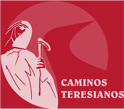
Castile, Castile for the high and illustrious Lady, our Queen Isabella.
The Queen’s association with Ávila and its province was very close, not only during her reign, but throughout her life.
She was born and lived the first two years of her life in Madrigal de las Altas Torres but, when her father Juan II died, she moved to Arévalo, where she spent the rest of her childhood. Although her duties took her to the Court (in Segovia at the time) in 1461, she returned to Arévalo continuously to see her mother. She never forgot this noble village, as shown in some of her writings.
Her connections with Ávila continued and, in 1468, after the controversial death of her brother Alfonso, Isabella was taken to Ávila to isolate and protect her from the plague that was affecting the population. She spent a few months in the Convent of Santa Ana (today used as the provincial offices of the regional government – Junta de Castilla y León) until she was given the title of Princess, an event that took place in the emblematic location of Toros de Guisando (El Tiemblo).
The years that led to her coronation were convulsed with problems, since her detractors refused to acknowledge her as their monarch. Even her marriage with Fernando of Aragón failed to rid her of her enemies and she again had to seek shelter with her family in Ávila in 1472.
Indeed, the nobility played with the young heirs and heiresses to the throne as it suited them. Isabella’s brother, Alfonso, was drawn into what is known as the ‘Farce of Ávila’, when a group of nobles crowned him King (Alfonso XII) in detriment to Enrique IV, who was on the throne at the time. A ‘provisional’ court was established for three years until the Prince died under suspicious circumstances in Cardeñosa in 1468 (it is said that he was poisoned by Royal order).
These shortcomings were a constant part of Isabella’s reign: seeking refuge and a peaceful place in our town while waiting for news. She returned after a miscarriage in 1475 (swearing her oath to the town’s charters) and would continue to do so from her many journeys to the South, since the front against the Muslims required the constant presence of the monarchs. She continued to stop off at Madrigal and Arévalo on her journeys until the end of the war in 1479.
The Queen’s relationship with Ávila was very close. The town enjoyed its golden age during the reign of the Catholic Monarchs and much of its artistic heritage dates from the end of the 15th and beginning of the 16th centuries, sponsored or directly paid for by the Crown. Indeed, there are many examples of the Isabelline Gothic style, which is simply a unique, local form of Gothic art, with its own style based on the French or German models and given its name thanks to its most important patron. Visitors always notice the many stones ‘balls’ on the edges, cornices and arches, etc. of these monuments and they are characteristic of that time.
The monument in the town that is most closely associated with the Catholic Monarchs is the Monastery of Santo Tomás, since they played a direct and significant role in the completion of its construction. Hernán Núñez Arnalte, treasurer and secretary of the monarchs, was the founder of the oldest part of the monastery. To continue the project, the monarchy put up funds, especially for the construction of the church that was used for the burial of their son, Juan. They also left their mark on the cloisters, which became part of the palace area used in summer by the monarchs and by other members of the court. The characteristic symbols associated with the monarchy include the yoke and arrows, pomegranates (which symbolise the taking of Granada) and chains, etc.
She also spent long periods in the Monastery of Santa Ana during the childhood of her son, Felipe II.
Universally known as Isabella the Catholic, she was the most important queen the country has ever had. Her reforms, her reconquest of the peninsula from the Arabs and her support for Christopher Columbus on his expeditions to America are examples of her significance in history.













